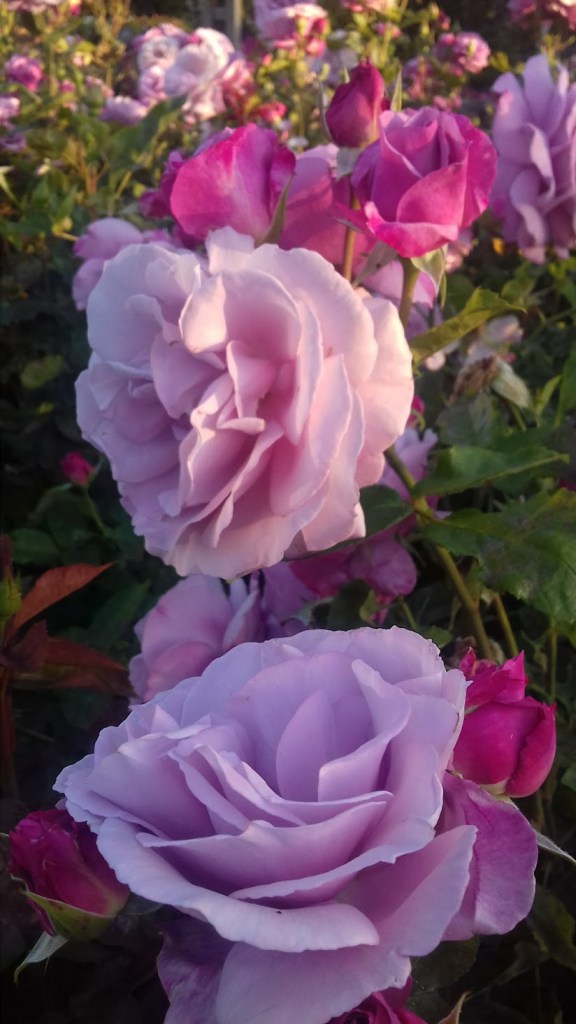



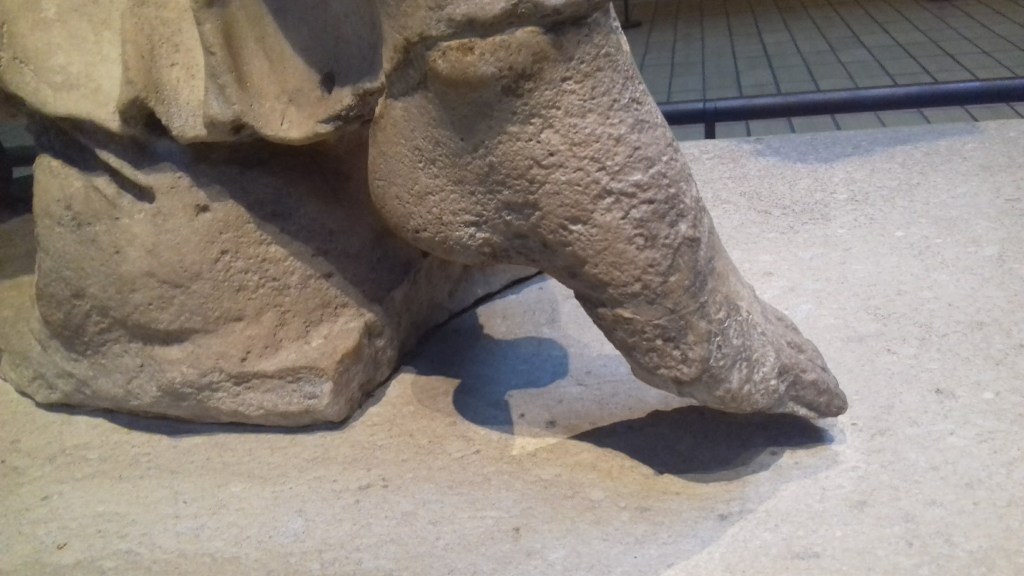
“The violets in the mountains have broken the rocks.” –Tennessee Williams
With the abundance of rain this year here in California, spring has been a long time coming. While it was still raining yesterday, today it’s sunny. Eventually, sun and warmth arrives. Seasons change. I’ve been dreaming of wildflowers that will appear on the hillsides. I’m remembering the abundance of flowers in gardens I experienced while living in the UK, and am watching for flower seeds I planted months ago to break through the earth and grow.
Five and a half hours south of me and 60 miles east of San Luis Obispo in the central part of California, lies the Carrizo Plains, a vast grasslands and the home of some of the largest concentration of rare plants and animals in all of California. In the year of a super bloom when there has been abundant rainfall and the conditions are right, the Carrizo Plains is also the home to some of the most incredible display of wildflowers one can imagine. Take a look. I dream of standing in the midst of that radiance. I want to revel in the wonder of their presence, want to be wrapped in the sight of that beauty’s embrace.
Given the severity of problems in the world, it might seem frivolous to speak of flowers. What is the value of flowers in comparison to the serious topics of loss and despair we find in the news day after day? There’s so much division in the world, so much violence and the threat of violence. The Guardian reports one recent news host here in America who told his audience it’s “probably not the best time to give up your AR15s.” In Tennessee representatives are expelled for participating in a protest for gun control after a deadly shooting in Nashville. The violence done to other humans, however, isn’t separate from the violence done to the natural world.
While flowers might on the surface seem frivolous, unnecessary to the pragmatic requirements of every day life and unrelated to the violence around us, in actuality flowers are necessary to our existence. Flowers add not only beauty to our lives, they’re also essential as a food source for pollinators like hummingbirds, bats, moths, and bees. These pollinators are responsible for major amounts of our food such as soy, fruit, nuts and grains. Seventy of the top 100 food crops are pollinated by bees. According to the Center for Food Safety, together these 100 food crops supply 90% of the world’s nutrition. “We can’t produce nutritious food in this country without bees,” says a longtime agricultural entomologist working for the USDA in The Guardian article, “‘Bees are Sentient,’ Inside the Stunning Brain of Nature’s Hardest Workers.” In the 2021-2022 growing year, however, 39% of commercial bee colonies collapsed. The previous year’s loss of 39.7% was the highest mortality rate on record. Those studying the cause of bee colonies collapse think that the use of pesticides on commercial farms and monoculture farming are central factors contributing to their loss. Both human loss and the collapse of bee colonies are symptoms of systematic imbalances and blindness toward the interconnection of all life.
When we nurture the earth, it nurtures us. Renewal isn’t always easy though. Tending a plant or working in a garden is a good teacher of this reality, as Ken Weisner describes in his poem, “The Gardener.”
You get down on your knees in the dark earth—alone
for hours in hot sun, yanking weed roots, staking trellises,
burning your shoulders, swatting gnats; you strain your muscled
midwestern neck and back, callous your pianist’s hands.
Weisner clearly communicates how creating a garden and bringing new life into being is a lot more than watching blossoms unfold. Before the blossoms there is significant amount of hard and humbling effort. You’re down on your knees in the dirt with the worms. It’s hot, as Weisner describes, or it’s wet, and sometimes before you finish work, your shoulders start to ache or your back. Why do it, some might say. Why do we change or try to begin anything new when it takes so much effort? When you’ve pulled the weeds and prepared the earth and finally see life eventually emerge after a long period of continuous nurturing, it truly feels wondrous. This is why. You sense your connection to the wonder of existence. When you see new life emerge from the earth, you feel the life in yourself as well. Weisner explains sense clearly at the end of his poem.
And when a humble sprout climbs like a worm up out of death,
you are there to bless it, in your green patch, all spring and summer long,
purified by labor, confessed by its whisperings, connected
to its innocence. So when you heft a woody, brushy tangle, or stumble
inside grimy, spent by earth, I see all the sacraments in place—
and the redeemed world never smelled so sweet.
Beholding the earth’s green patch all summer that you worked hard to bring into being, blessing it with your effort, as Weisner states, does indeed feel sweet.
I don’t know why people sometimes hold values that function to work against their own best interest. I do know I want beauty to persist. I want to live so that my actions nurture beauty and help it to thrive. In the small garden I’ve started, I’ve noticed how steadfastly the violas and daffodils persist despite the ongoing downpour of rain. Though they seem fragile and delicate, flowers have a way of holding up, a way of returning despite what the many ways the environmental conditions limit them. They want to persist and do.
Why is it that so many long to travel so they can stand in the midst of wildflowers, wanting surround themselves with their vibrant color, so much so that places like Elsinore in Southern California had as many as 100,000 people came in 2019 to see the area’s poppy strewn hills on a single weekend day, as this article in the Guardian reports? Perhaps it’s because standing in a garden in full bloom feels something like standing on holy ground.
Yes, I’m longing for flowers, banks and blankets of them. I want to walk under arbors showered with rose blossom or wisteria. I yearn to wander fields wild with yellow, golden poppies, or the pink hum of owls clover. Rich wands of purple delphinium, the orange staccato of pimpernel, the large timpani statement of a sunflower, soft melody of a ranunculus folding me into its round center, the sweet violin perfume of violet lifting me into its delicate music–I want the entire world of flowers to embrace me. I want to stand in and walk amongst flowers. I want to grow flowers. I want to wake in the morning and tell them how beautiful they are, how grateful I am to be alive in a flowering world where bees go on working.

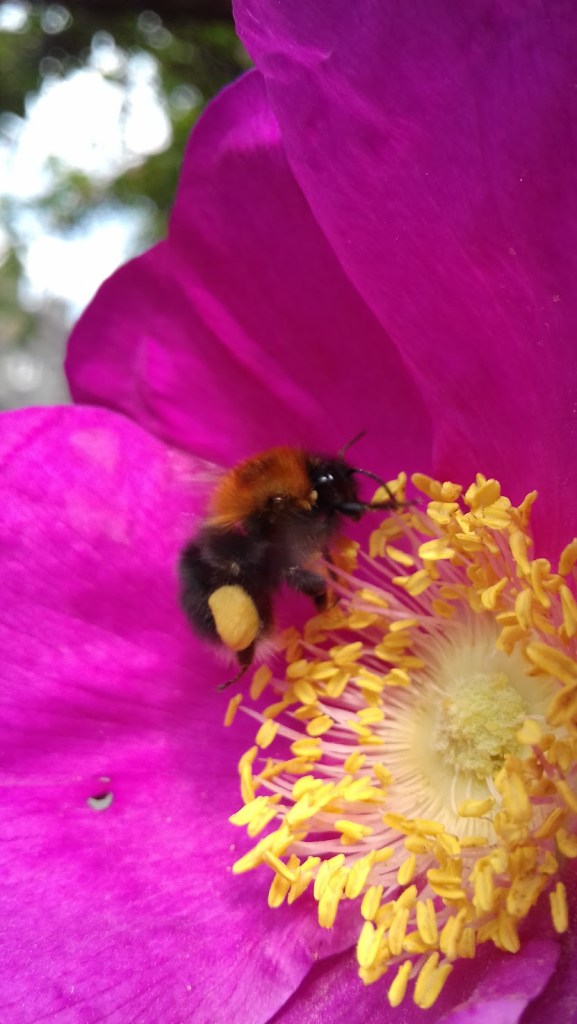
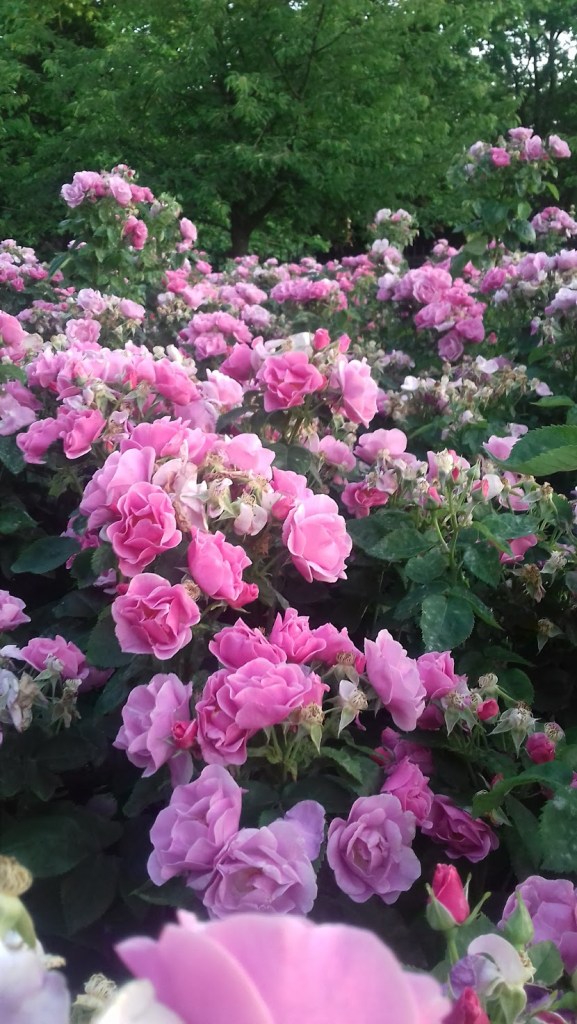

Gardens are sanctuaries that bring us sweetness after months of winter and hard work. I hope you can find a meadow, a hillside, some small glen or garden to visit or tend. I hope you find your own way to hear the flowers humming with bees, to absorb the music of their color and the life of bees. I hope you hear, smell touch and see all the ways life is reaching out to you this day, and that you find a way to become new.

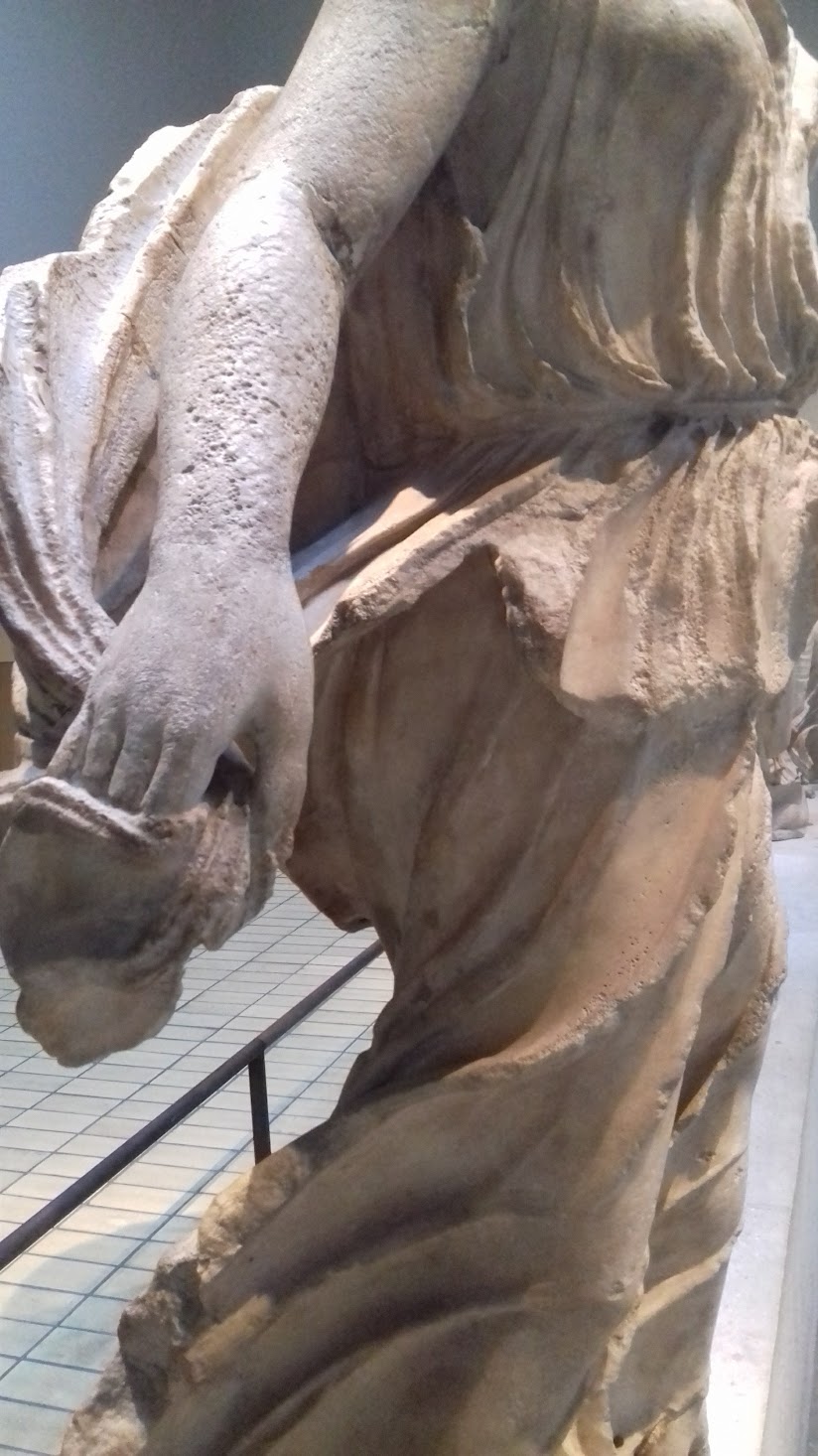



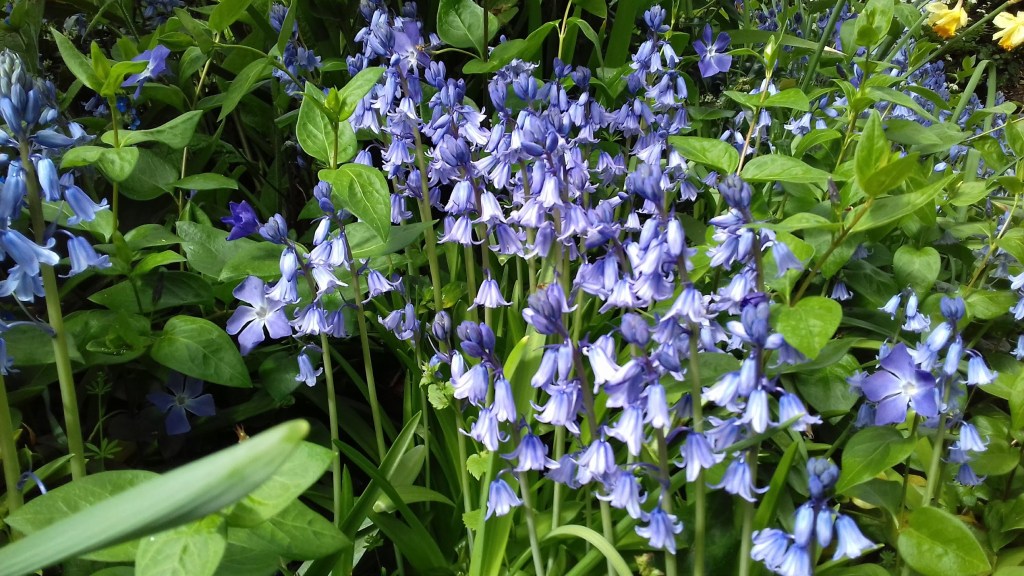



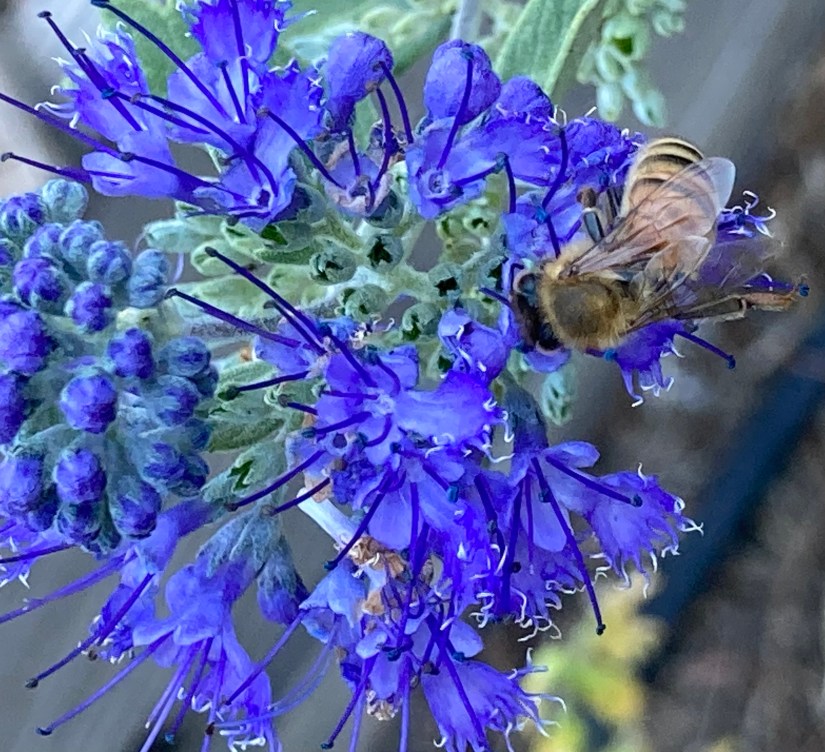






























 Rain has fallen relentlessly the past few months in Santa Cruz County, but today a break occurred allowing the sun to come out, and I emerged into my backyard’s delicious light. Looking up at the billowing clouds, I rested in the afternoon’s quietness, reveled in the creek’s soft rumpling as it moved through the redwoods down the road. Ill with a cold, I had no plans but to take in the day. “The Sabbath is the presence of God in the world, open to the soul of man,” writes Abraham Joshua Heschel. “God is not in things of space, but in moments of time.” Time is a temple, an experience to savor and relish. Today I felt enfolded in this truth.
Rain has fallen relentlessly the past few months in Santa Cruz County, but today a break occurred allowing the sun to come out, and I emerged into my backyard’s delicious light. Looking up at the billowing clouds, I rested in the afternoon’s quietness, reveled in the creek’s soft rumpling as it moved through the redwoods down the road. Ill with a cold, I had no plans but to take in the day. “The Sabbath is the presence of God in the world, open to the soul of man,” writes Abraham Joshua Heschel. “God is not in things of space, but in moments of time.” Time is a temple, an experience to savor and relish. Today I felt enfolded in this truth.













